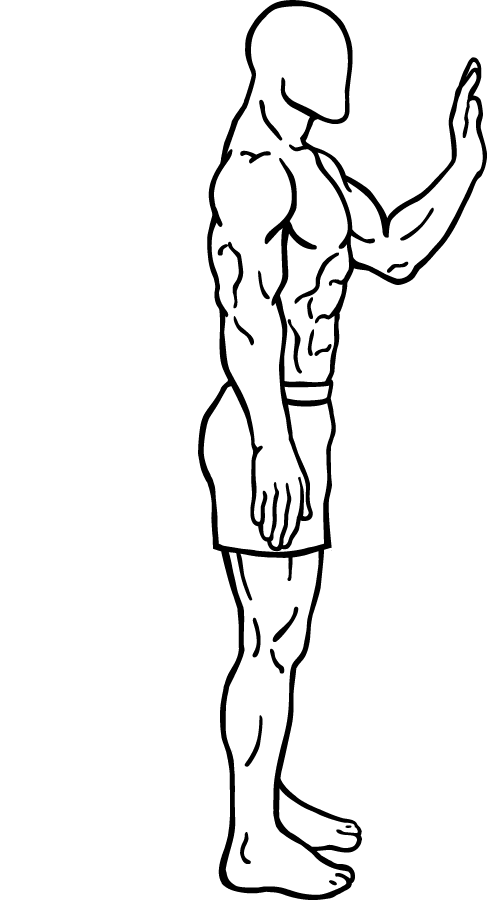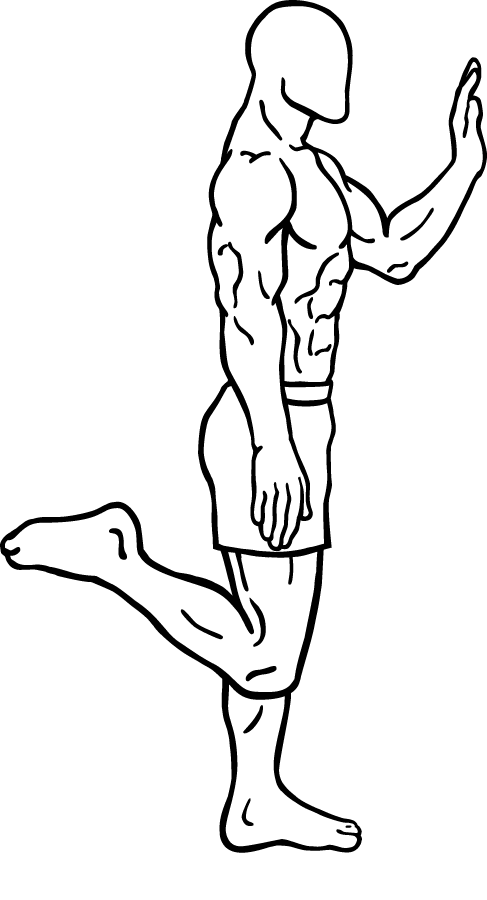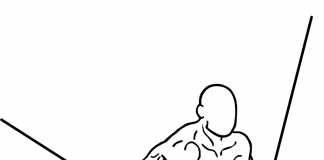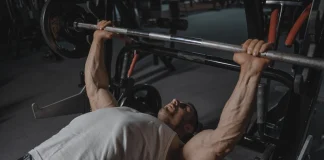Last Updated on September 30, 2014
To sculpt your lower body, you’ve likely heard about the importance of targeting your glutes and hamstrings. These muscles not only help in giving your legs a defined, toned appearance but also play an essential role in maintaining functional strength and stability. One of the most effective yet simple exercises that target both these muscle groups is the Body Leg Lifts.
In this blog post, we’ll dive deep into everything you need to know about body leg lifts, including how to perform them properly, the benefits they offer, and ways to modify them for varying fitness levels. Whether you’re new to exercising or a seasoned fitness enthusiast, body leg lifts can be a powerful addition to your routine.
What Are Body Leg Lifts?
Body leg lifts are a type of strength training exercise designed to target your glutes (buttocks) and hamstrings (the back of your thighs). The movement is simple yet effective, focusing on engaging your core, stabilizing muscles, and the lower body. Not only do these exercises help in toning and strengthening the muscles, but they also improve balance, posture, and mobility.
Muscles Worked During Body Leg Lifts
Body leg lifts primarily focus on two major muscle groups:
- Glutes: The glutes are a group of three muscles—gluteus maximus, gluteus medius, and gluteus minimus—that are responsible for movement in your hips and thighs. Strong glutes are essential for a stable core and prevent injuries during physical activities like running, jumping, and lifting.
- Hamstrings: Located at the back of your thighs, the hamstrings are responsible for bending the knee and extending the hip. Hamstring strength is crucial for athletic performance, injury prevention, and overall leg strength.
Secondary Muscles Activated
- Core: Body leg lifts require a stable core, which means you’ll be engaging your abdominal muscles throughout the exercise. Keeping your abs drawn in helps protect your spine and ensures proper alignment during the movement.
- Lower Back: The exercise also engages the muscles in your lower back, which help support your spine and maintain posture.
- Quadriceps: While they’re not the primary target, your quads (located in the front of your thighs) work to stabilize your legs during the lift.
Benefits of Body Leg Lifts
Incorporating body leg lifts into your workout routine can bring about numerous benefits. Let’s explore some of the major advantages:
1. Strengthens Glutes and Hamstrings
By isolating these muscle groups, body leg lifts work specifically to enhance the strength and tone of your glutes and hamstrings. This is crucial for activities that involve lifting, running, cycling, or any form of athletic performance. Strengthening these muscles also helps in day-to-day functional movements like walking, standing, and even sitting.
2. Improves Posture
Strong glutes and hamstrings contribute to better posture. They help maintain the alignment of your pelvis and spine, preventing slouching or an exaggerated curve in your lower back. Body leg lifts engage these muscles to improve your body’s overall stability and support, which can reduce the risk of developing lower back pain or other posture-related issues.
3. Enhances Balance and Coordination
Balance plays a significant role in body leg lifts, as you perform the exercise on one leg. This increases the demand on your stabilizer muscles, forcing them to work harder to keep you steady. Over time, this will help improve your overall balance and coordination, which is beneficial not only in workouts but in everyday activities.
4. Injury Prevention
Weak glutes and hamstrings can lead to various injuries, particularly in the lower back, hips, and knees. By strengthening these muscles, body leg lifts can help prevent common issues like hamstring strains, lower back pain, and hip flexor problems. Strong glutes also help to take pressure off your knees, reducing the risk of knee injuries.
5. Functional Movement Improvement
Since body leg lifts mimic everyday movements like walking, bending, and lifting, they help enhance your functional fitness. You’ll notice improved ease of movement, flexibility, and range of motion in your daily life, whether you’re carrying groceries, bending to tie your shoes, or climbing stairs.
How to Perform Body Leg Lifts Correctly
To maximize the effectiveness of body leg lifts and prevent injury, it’s crucial to perform the exercise with proper form. Follow these steps carefully:
Step 1: Position Yourself
- Stand upright with your feet about hip-width apart.
- Engage your core by drawing your navel towards your spine. This will protect your lower back and ensure good posture throughout the exercise.
- Place your hands on a sturdy surface such as a wall, a post, or a tall weight bench for support. This will help with balance as you lift your leg.
Step 2: Start the Movement
- Shift your weight to one leg.
- Slowly lift your opposite leg straight behind you. As you do this, keep your knee straight and try not to arch your lower back.
- Engage your glutes as you lift the leg, focusing on feeling the contraction in your buttocks and hamstrings.
Step 3: Lower and Repeat
- Slowly lower your leg back down, maintaining control throughout the movement.
- Repeat the lift 10-15 times, or as many repetitions as your fitness level allows.
- Switch to the opposite leg and repeat the same steps.
Step 4: Maintain Proper Form
- Keep your back straight and avoid leaning forward or arching your lower back.
- Make sure your hips stay level and square throughout the exercise—avoid letting one side dip lower than the other.
- Focus on using your glutes and hamstrings to lift the leg, rather than relying on momentum.
Common Mistakes to Avoid
- Arching the back: Be mindful of keeping your spine neutral. Overarching your lower back can lead to discomfort and even injury.
- Using momentum: The movement should be slow and controlled. Avoid swinging your leg up and down—this can reduce the effectiveness of the exercise and increase the risk of injury.
- Not engaging the core: Failing to engage your core can cause unnecessary strain on your lower back and hinder balance.
Modifications for Different Fitness Levels
One of the great things about body leg lifts is that they can be easily modified to suit different fitness levels. Whether you’re a beginner or advanced, there are variations and adjustments you can make to keep the exercise challenging and effective.
For Beginners:
- If you find it difficult to balance on one leg, hold onto a chair or a wall for support.
- Perform the movement with a shorter range of motion until you build more strength and flexibility in your glutes and hamstrings.
- Start with fewer repetitions (5-10) and gradually increase as you become more comfortable with the exercise.
For Intermediate:
- As your balance improves, try performing the exercise without holding onto any support. This will challenge your stabilizer muscles even more.
- You can also add ankle weights or resistance bands to increase the intensity of the exercise. This will require your muscles to work harder during the movement.
For Advanced:
- To increase the challenge, try performing the exercise while standing on an unstable surface, such as a balance pad or a BOSU ball. This will further engage your core and stabilizing muscles.
- You can also add more complex movements, such as combining the body leg lift with a reverse lunge or squat to create a dynamic lower body workout.
Variations of Body Leg Lifts
While the traditional body leg lift is a great exercise on its own, there are several variations you can try to target your glutes and hamstrings from different angles and add variety to your workout routine.
1. Side Leg Lifts
In this variation, you’ll lift your leg out to the side rather than behind you, which targets the gluteus medius and minimus. This is excellent for improving hip stability and balance.
2. Donkey Kicks
This variation involves getting down on all fours and kicking one leg up towards the ceiling. It places more emphasis on the gluteus maximus and is a great way to add variety to your lower body routine.
3. Resistance Band Leg Lifts
Adding a resistance band around your thighs or ankles can significantly increase the intensity of the exercise. The added resistance forces your muscles to work harder, making the lift more challenging and effective for muscle growth.
4. Weighted Leg Lifts
Holding dumbbells or wearing ankle weights can take this exercise to the next level. The added weight will increase muscle activation, providing a more intense workout for your glutes and hamstrings.
Sample Body Leg Lift Routine
Now that you know how to perform body leg lifts properly and understand the various modifications and variations, here’s a sample workout routine that incorporates these exercises. This routine can be done at home or at the gym, and it’s designed to help you build stronger glutes and hamstrings over time.
Warm-Up
- 5-10 minutes of light cardio (walking, jogging, or cycling)
- Dynamic stretches focusing on the legs and hips
Workout
- Body Leg Lifts: 3 sets of 15 reps per leg
- Side Leg Lifts: 3 sets of 15 reps per leg
- Donkey Kicks: 3 sets of 15 reps per leg
- Resistance Band Leg Lifts: 3 sets of 12-15 reps per leg
- Weighted Body Leg Lifts: 3 sets of 10-12 reps per leg
Cool Down
- 5-10 minutes of stretching focusing on the hamstrings, quads, and glutes.
Conclusion
Incorporating body leg lifts into your regular workout routine is a fantastic way to strengthen and tone your glutes and hamstrings. The benefits go beyond aesthetics, as they also improve posture, balance, and overall functionality. Whether you’re a fitness newbie or an experienced athlete, this simple yet effective exercise can make a big difference in your lower body strength and endurance.
By following the guidelines in this post and gradually increasing the intensity as your strength improves, you’ll be well on your way to sculpting a stronger, healthier body. Remember to prioritize form over speed, listen to your body, and, most importantly, stay consistent with your efforts. Strong glutes and hamstrings are within reach—just lift your way to success!








